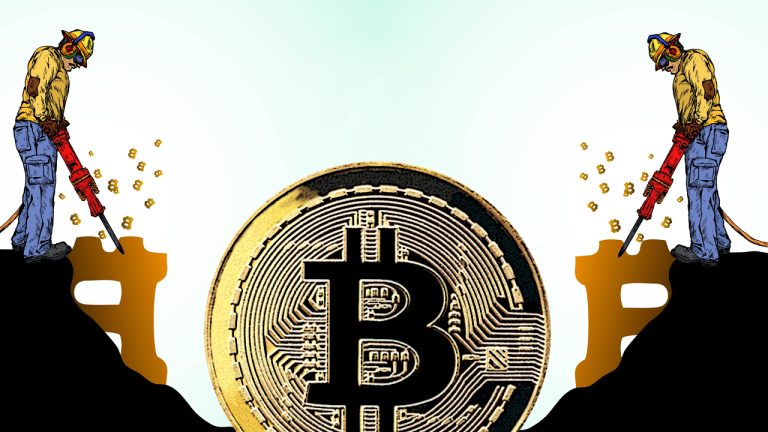
Etherscan’s v2 API beta unifies access to more than 50 EVM-compatible networks, simplifying development and increasing efficiency.
Etherscan, a blockchain explorer and analytics provider, has introduced its v2 application programming interface (API) update, a significant upgrade to simplify multichain development.
The beta release of Etherscan v2 allows developers to access data across 50 Ethereum Virtual Machine (EVM)-compatible blockchain networks using a single API key.
An API is a unique code passed in to identify and authenticate a user, effectively functioning as a digital ID badge that provides access to the API’s services or data.
 According to someone with direct knowledge of the situation, speaking with Bloomberg, Arkham Intelligence, the company behind the multi-blockchain monitoring and parser tool, is gearing up to introduce a crypto derivatives exchange next month. Arkham Is Reportedly Preparing to Launch a Crypto Derivatives Trading Platform This week, Anna Irrera of Bloomberg revealed that Arkham Intelligence, […]
According to someone with direct knowledge of the situation, speaking with Bloomberg, Arkham Intelligence, the company behind the multi-blockchain monitoring and parser tool, is gearing up to introduce a crypto derivatives exchange next month. Arkham Is Reportedly Preparing to Launch a Crypto Derivatives Trading Platform This week, Anna Irrera of Bloomberg revealed that Arkham Intelligence, […]

The scam often starts on a Facebook ad where those interested click the link and are met with a “Letter from the Professor” or “Letter from the Dean” on the company website.
Washington’s financial regulator has warned the public of an emerging crypto scam — where fraudsters pose as business “professors” to trick victims into depositing their hard-earned funds into a crypto scam or face “legal action.”
The “self-proclaimed professors” claim to be part of an “Academy,” “Business School,” or “Wealth Institute,” enticing victims with courses that can result in “exorbitant rates of return,” according to a July 16 statement by the Washington State Department of Financial Institutions (DFI).
Victims typically come across the investment opportunity on a Facebook ad where they click the link and are met with a “Letter from the Professor” or “Letter from the Dean” on the company website.
 After the Samourai Wallet indictment, the cryptocurrency community discovered that the Bitcoin blockchain analysis platform OXT is no longer operational, as it was acquired by the Samourai team in December 2017. On April 25, Laurentmt, a co-founder of OXT and bitcoin advocate, revealed the closure on the social media site X with the statement, “RIP […]
After the Samourai Wallet indictment, the cryptocurrency community discovered that the Bitcoin blockchain analysis platform OXT is no longer operational, as it was acquired by the Samourai team in December 2017. On April 25, Laurentmt, a co-founder of OXT and bitcoin advocate, revealed the closure on the social media site X with the statement, “RIP […]
To check an Ethereum transaction, use a blockchain explorer and enter the transaction hash to view details such as sender/receiver addresses and gas fees.
A transaction on the Ethereum blockchain is technically initiated by an external account owner (not a contract). For example, if User A sends 1 Ether (ETH) to User B, the action of debiting from one account and crediting to another changes the blockchain’s state.
The change specifically takes place on the Ethereum Virtual Machine (EVM). Ethereum transactions need to be broadcast to the entire network, and any node can broadcast a request for the execution of a transaction on the EVM.
After broadcasting the request, a validator can then execute the transaction and propagate the state change to the whole network. Transaction fees are incurred during the process of validation, and each transaction must be included in a validated block. There are different types of transactions on the Ethereum network:

Here’s a brief step-by-step guide on how to track Ethereum transactions:
Step 1: Select an Ethereum blockchain explorer
Some blockchain explorers are specific to Ethereum, such as Etherscan, Ethplorer and EthVM. Others support multiple chains, such as Blockchain.com and Tokenview, among others.

On Etherscan, for example, the search field is on the top, left-hand corner of the screen next to a dropdown that says “All Filters.” Depending on the tool, a user can search for information based on a wallet address, transaction hash (txid), block, token or domain name.

The txid is a unique identifier attached to a specific transaction. All transactions carried out on-chain, or those to and from external addresses, carry a unique txid found in the transaction details.
Depending on the platform, it can also be called a “hash” or “txn hash.” It usually looks like a string of random letters and numbers. On MetaMask, for example, a user can instantly see the txid upon clicking the “Activity” tab and selecting the transaction.

Other than the txid, traders can also use their public address (a string of 42 characters corresponding to their public account). In this case, they will be taken to an overview of their wallet activities, allowing them to navigate to the specific transaction independently.
Related: Ethereum wallets: A beginner’s guide to storing ETH
Step 3: Click the icon for “search” or “enter” on the blockchain explorer



How to know if an ETH transaction was successful: Details indicating the state of the transaction will appear on the blockchain explorer. If the transaction was successfully validated and is now on the blockchain, it will say “success” or “successful.”

If there are no errors displayed, it means that the transaction was completed successfully. The ETH should be credited to the destination wallet or exchange account within 24 hours of sending.
In the event of an Ether transaction failure, on the other hand, several error messages can appear:
Related: How to sell Ethereum: A beginner’s guide to selling ETH
An average transaction on the Ethereum blockchain will typically take between 15 seconds and five minutes to process, depending on several factors. These include the amount paid to process it (transaction fee) and how busy the network is at the time of processing.
Ethereum transitioned from a proof-of-work to a proof-of-stake blockchain after the Merge. However, transaction speeds remain roughly the same. According to the Ethereum Foundation, it’s a common misconception that the Merge drastically sped up transactions.
However, there’s a slight difference, with slots occurring precisely every 12 seconds post-Merge compared with every 13.3 seconds pre-Merge. In any case, the change is barely noticeable by most users, as processing still usually depends on network congestion and transaction fees.
When a transaction is initiated, it is logged into Ethereum’s memory pool (mempool) and waits for validators to pick it up. The mempool functions much like a waiting room where pending transactions are held.
Once a validator enters transaction data into a block and adds the block to the blockchain, the transaction is considered complete. It is said to be finalized and irreversible after six additional blocks have been mined and added on top of it.
By checking a transaction’s status, traders can confirm whether their transaction has succeeded or failed and how many blocks have been created since their transaction was added to the chain.
Ethereum participants must pay gas fees to use the network to transfer funds or deploy smart contracts. The fees largely depend on the number of participants waiting to execute transactions at a given time.
Network congestion and demand are thus directly proportional to transaction costs. When demand is high, costs rise — the opposite is true when demand is low. In any case, checking a transaction’s status helps a trader monitor the cost of using the network.
It can also help users determine if the gas fee they paid is sufficient to have their transaction confirmed. Low gas fees can usually truncate or delay transactions, leaving them to remain pending for long periods of time, especially during high network congestion.
Such transactions will remain pending until the gas fees reach the required minimum fees on the network. If this happens, a user can resend the transaction by resubmitting it and increasing the gas fee while ensuring it carries the same nonce.
In addition to transaction status, Ethereum blockchain explorers can also reveal the following helpful information:
By being aware of the above, traders can stay on top of their ETH transactions and make sure transactions are processed correctly and quickly. This helps to ensure smooth Ethereum transactions when sending and receiving funds or deploying smart contracts. Understanding a transaction’s status can also help users adjust their spending habits and optimize network usage.
 On March 7, onchain observers noticed that Vitalik Buterin, the co-founder of Ethereum, had allegedly sold billions and trillions of airdropped ERC20 tokens, resulting in a gain of an estimated $700,000 in value. The market liquidity of the airdropped tokens was shallow, and the relatively unknown ERC20 tokens plummeted in value after Buterin reportedly sold […]
On March 7, onchain observers noticed that Vitalik Buterin, the co-founder of Ethereum, had allegedly sold billions and trillions of airdropped ERC20 tokens, resulting in a gain of an estimated $700,000 in value. The market liquidity of the airdropped tokens was shallow, and the relatively unknown ERC20 tokens plummeted in value after Buterin reportedly sold […] As Ordinal inscriptions approach the 150,000 mark, blocks larger than 3 MB have become commonplace, with many blocks near the 4 MB range. Meanwhile, after the average transaction fee on-chain rose 122% higher at the beginning of February 2023, the average fee has remained the same over the last few weeks and is currently coasting […]
As Ordinal inscriptions approach the 150,000 mark, blocks larger than 3 MB have become commonplace, with many blocks near the 4 MB range. Meanwhile, after the average transaction fee on-chain rose 122% higher at the beginning of February 2023, the average fee has remained the same over the last few weeks and is currently coasting […]